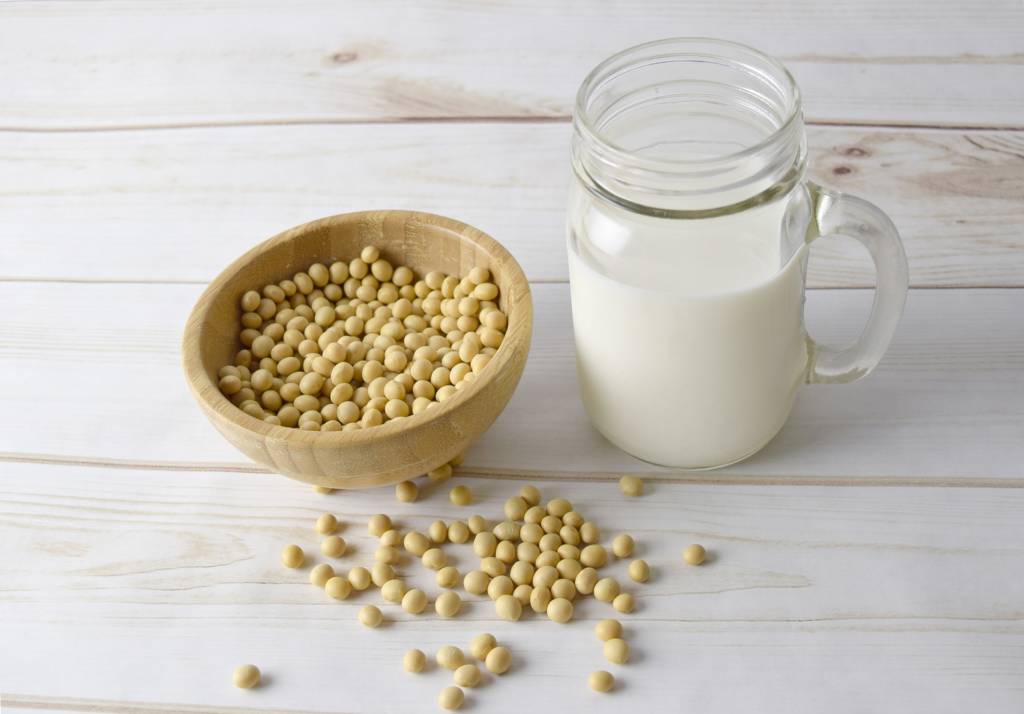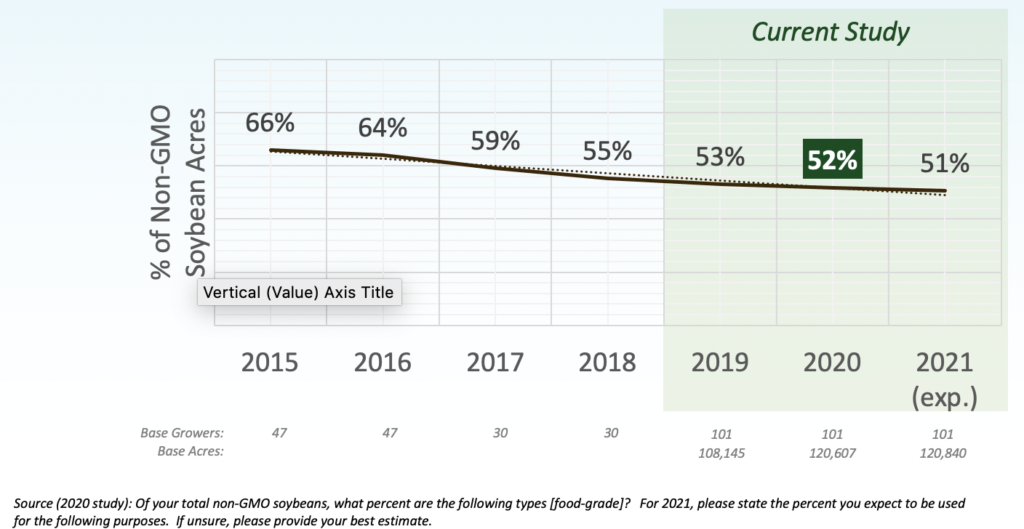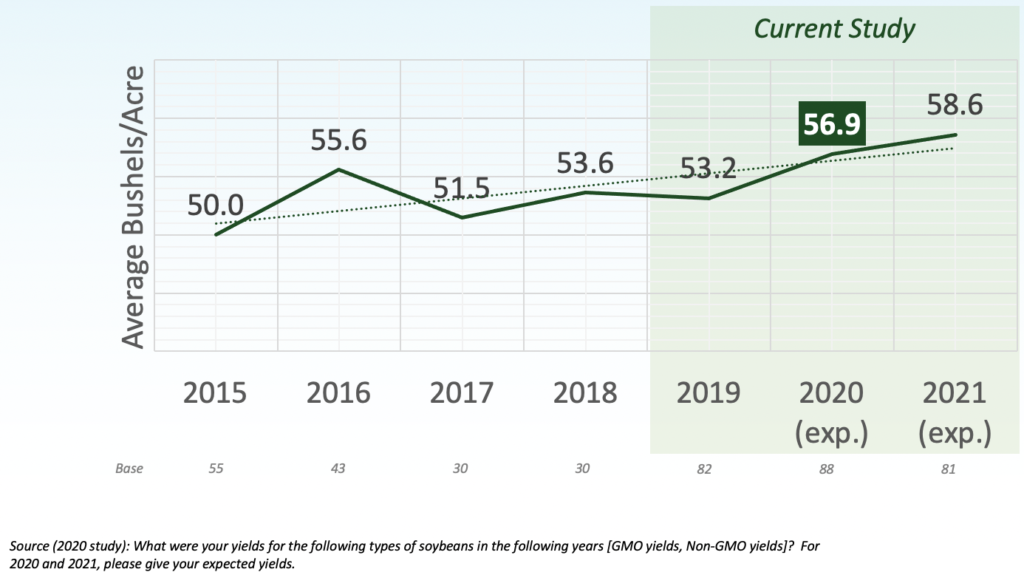Non-GMO Food-grade Soybean Trends - September 2020
- Category:
- General News
- Reports
- Soy Foods

In 2020, soybean growers planted 83.8 million acres. Of those, 5 million acres were non-GMO soybeans. The September 2020 Non-GMO Food-grade Soybeans Quantification Study provided further insight on those 5 million acres.

Non-GMO food-grade soybeans have been decreasing by an average of 2.5 percent each year. In 2015, 66 percent of non-GMO soybeans were food-grade. This year, that number sits at 52 percent, which is a 1 percent drop from 2019. However, non-GMO growers’ food-grade acres have been increasing by an average of 4.8 percent each year. Non-GMO soybean yields have also increased by approximately 2.8 percent annually.

Marketing non-GMO food-grade soybeans looks different. Nearly 90 percent of sales are contracted. The number of these food-grade soybeans that are exported has remained consistent, with 87 percent to be exported in 2020. Japan is expected to be the number one importer of these soybeans, with food-grade making up 88.4 percent of their total U.S. Soy imports.
After export, half of the U.S. produced non-GMO food-grade soybeans are destined for the tofu market. It is expected an additional 19 percent will be used for soymilk. The other soybeans will be distributed between natto, miso and other markets.
Looking toward the future, more growers reported they will increase rather than decrease their non-GMO food-grade soybean acres in the coming year.
Below you can download a summary of the Non-GMO, Food-grade Soybean Acre report. If you’re interested in learning more or accessing the full study, contact Will McNair, USSEC director of oil and human protein, at wmcnair@ussec.org.